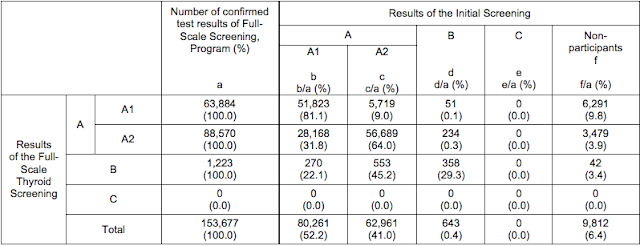Below is a translation of the June 13, 2014 statement by the Central Research Institute of Electric Power Industry (CRIEPI).
Our Opinions on Radiation Hormesis Effects
June 13, 2014
Radiation Safety Research Center
Nuclear Technology Research Laboratory
Central Research Institute of Electric Power Industry
- Currently our center is not conducting research on radiation hormesis.
- Based on the knowledge gained so far, we consider it difficult to generalize the effects of hormesis as the low-dose radiation effects and to incorporate them into the radiation risk assessment.
- There are some instances where merchandise with hormesis effects are sold with reference to our research results, but our center has nothing to do with it.
From the 1990s to the early 2000s, our center conducted studies to verify the effects of radiation hormesis. We elucidated that various hormesis-like effects were induced by low-dose radiation in animal experiments under certain conditions. However, at this time, we consider it difficult to generalize the effects of hormesis as the low-dose radiation effects and incorporate them into the radiation risk assessment mainly for the following two reasons.
First, many of the radiation hormesis effect verification experiments use animals not in healthy conditions (animals born prone to illnesses or animals with cancer cells transplanted). A special series of experiments like these are used to improve observation of the radiation response since the low-dose radiation effects are extremely difficult to detect. We consider it inappropriate to estimate effects in healthy human from the results obtained from such experiments.
Second, verification experiments of the radiation hormesis effects limit indices which are being observed. For instance, in research on diseases caused by reactive oxygen, indices related to reactive oxygen are studied: whereas in most cases, indices considered as issues related to general radiation effects, such as lifetime cancer incidence or lifespan changes, are not studied. As the effects of radiation are multifaceted, we believe they should not be determined only by one-sided data.
Please keep the above points in mind when viewing past research results of the radiation hormesis effects currently listed on our website.
Furthermore, although we consider it difficult to apply the low-dose radiation hormesis effects towards the radiation risk assessment of the public, this does not mean we flatly deny their application to medical fields. However, please beware that our center has nothing to do sales of merchandise claiming radiation hormesis effects based on the results of our research (we will never cooperate with sales activities of specific products).











